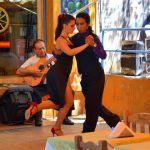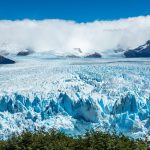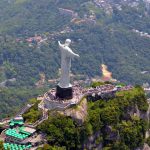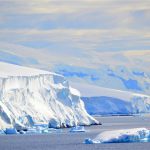To our great benefit, Cruise Specialists hosts Steve and Wendy Bodenhaimer are never at a loss for words when it comes to sharing the wonderful details of each voyage they host.
Without further a do, a travelogue of the Holland America Grand South America and Antarctica Cruise:
You may be wondering why these particular trips we are on are called Grand Voyages. There are more special events and perks that don’t occur on regular voyages.
- For example, there are more evening events, like the Officers Ball and Valentine Ball.
- There are many more theme nights and unique dinners.
- And then there are the gifts! Every formal night, which happen about once a week, we all have a gift left in our room with a note.
- So far, we have each received: canvas tote bags, imprinted with the Cruise name and year; fold up rain ponchos; leather card holders; a matching set of hat, gloves, and scarf; an 18-inch high stuffed penguin; an Antarctica journal and reference book.
- Our Cruise Specialists guests also have received a heavy canvas bag with the unique logo for the year and a lined windbreaker jacket.
We’ll be returning to our home away from home, Holland America’s Prinsendam. She’s cozy. She’s comfortable. She’s friendly. She’s beautiful in an old fashioned way. And she’s nimble at sea. They call her the “Elegant Explorer” and we agree.
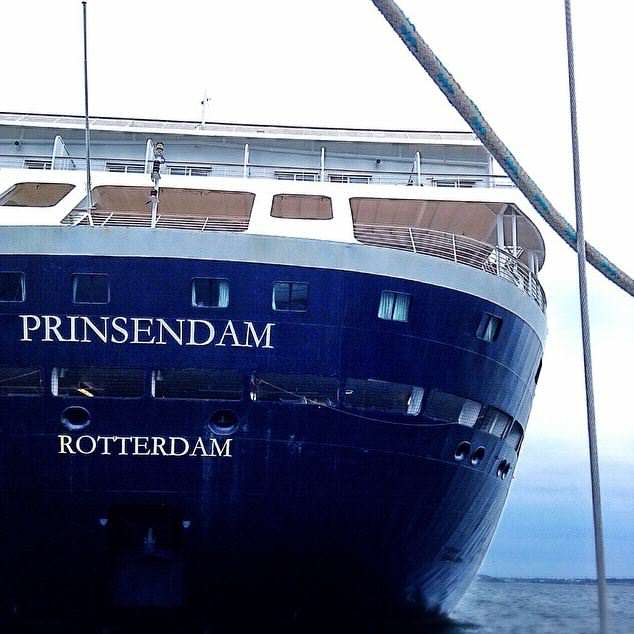
Columbia
Our first port is Isla de Providencia, Columbia.
It is actually 625 miles off the coast of Nicaragua, but is owned by Columbia. Brett described it as what the Caribbean was like before it became a tourist and shopping mecca. No big hotels and no Diamonds International stores.
What it does have is the third largest barrier reef in the world, so tourism here is geared to divers and snorkelers. The Lovers Bridge connects Providencia to the neighboring island of Santa Catalina and is the popular place for cruise passengers to walk when they get off the tenders.
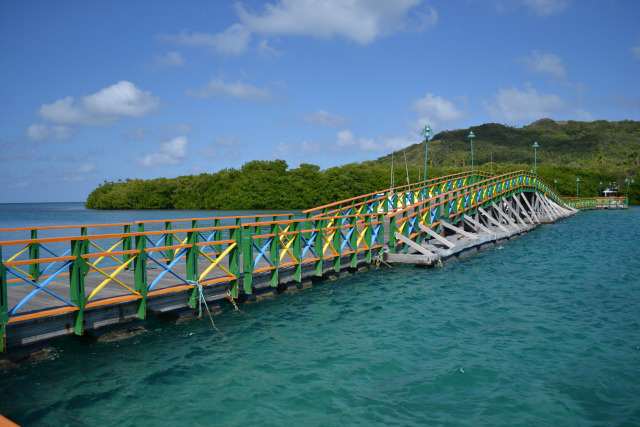
San Blas
Sometimes plans change due to weather, which was the case with a planned stop to Puerto Limon, Costa Rica. As the Captain explained, we would not have been able to safely dock and reluctantly, that port had to be cancelled. On short notice and with our time limited by our scheduled transit of the Panama Canal, there was only one alternative – the San Blas Islands.
San Blas is a collection of several hundred islands inhabited by the Kuna Indians. A visit to the island involves walking through the rather primitive streets, looking at the wares hanging in front of every hut.
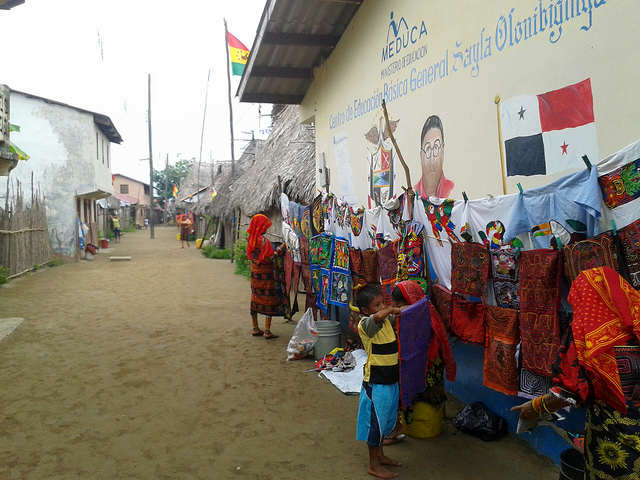
They are famous for the mola embroidery that they create, which is very colorful and can be very intricate – involving hand stitching of patterns onto multiple layers of fabric.
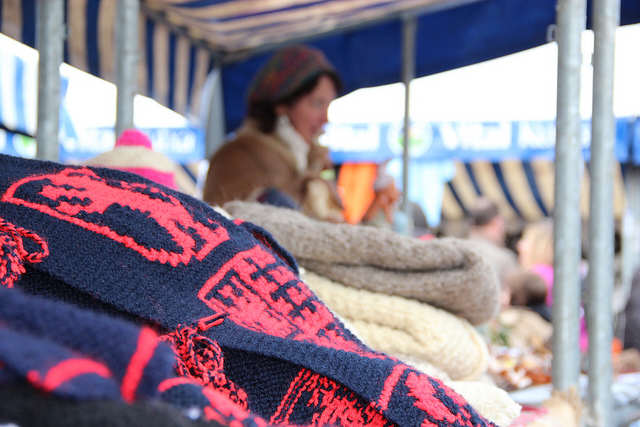
Panama Canal
One of the highlights of this voyage is the transit through the Panama Canal.
This is our fourth time through. It’s always fascinating and always a slightly different experience. We had several lectures in the past few days about its history, how it works, and what our transit would entail.
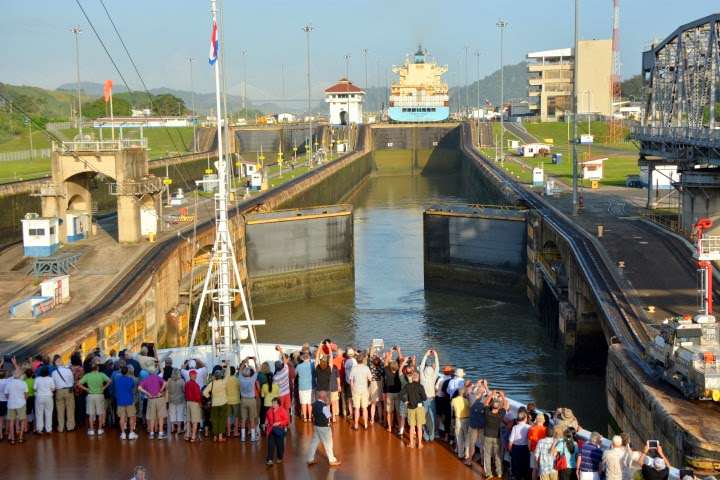
A local Canal lecturer came on board that morning to provide commentary on the outside decks and coffee was served at several strategic positions. With your coffee, you could enjoy a fresh and delicious “Panama Roll” – those wonderful little pastries that are soft and friendly and filled with apricot.
One fun fact we learned this time is how expensive it is to make a full transit. We also paid extra to have a reserved transit time, which would allow us to enter and make our way through entirely in daylight. Total cost for today: $190,000.
It took several more hours through two more locks and another lake before we arrived at the Bridge of the Americas, also known as the Freedom Bridge, which marks the exit from the Canal.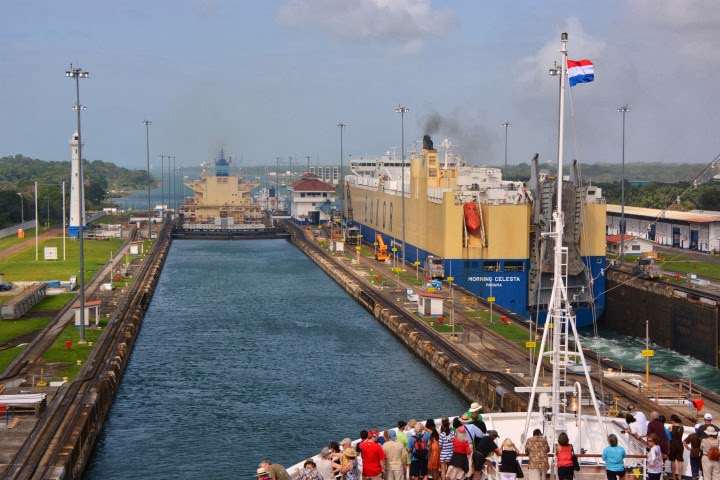
As you pass under the bridge, there is a spectacular view of the Panama City skyline. It is tall and modern and includes some very unique buildings, which we had a chance to see up close on foot on our last visit here. By 3:00PM in the afternoon, it’s all over, and we’re on our way further south.
Ecuador
Ecuador – home of the Panama hat, tagua buttons, and jumping off point for the Galapagos Islands. Manta is primarily a fishing port, so dozens of big tuna boats could be seen in the harbor and the fish market was bustling with vendors and buyers. From the port in Manta, a small group of energetic guests embarked on a 4-day adventure to the Galapagos.
We’ve been to Manta at least three times. We visited the hat factories in Montecrisiti and had walked fairly extensively around the city.
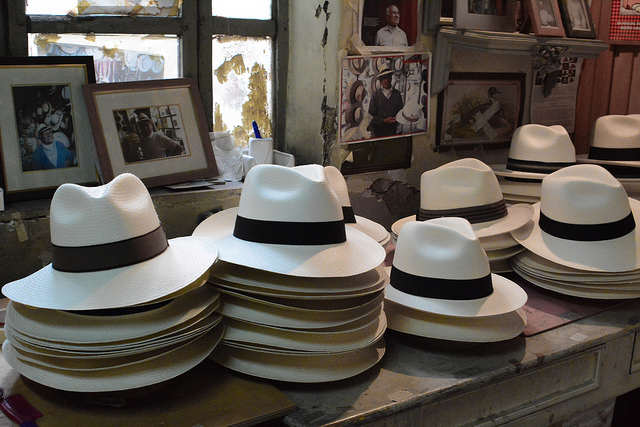
So this visit, we decided on a tour called the Traditional Coffee Experience. It was an hour-plus ride out to Finca El Cisne, which is a small coffee and cattle farm. Along the way, “Wild Willie” as our guide wanted to be called, told us about the emergence of coffee as a major crop for Ecuador.
Many small farms are planting coffee and are able to make a living by growing and selling the beans. During our visit, we walked among the coffee plants, as well as the abundant banana and mango trees. We saw both the old labor-intensive methods of processing the beans and the newer and faster machinery they have acquired to simplify and expedite the process.
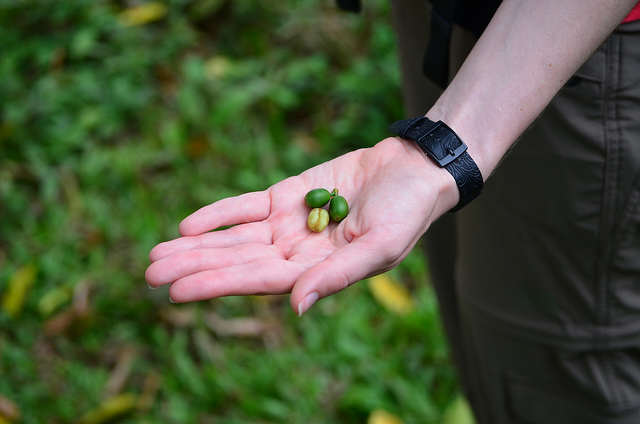
We were served samples of their coffee (of course we bought some to take home), which was very smooth and rich and marketed under the name Café Vasar. We also were served some traditional snacks of cheese empanadas and really excellent little sweet cookies, the size of a penny which just melted in your mouth.
At Sea
This is one of those days that reminds us why we love being on the ocean for a long voyage.
The sun is out but it’s not hot – perhaps 65 degrees. There is a moderate breeze that makes your hair fly wildly around and creates little whitecaps on the water. There is no land and no other ship in sight.
We are in the Pacific Ocean many miles off the coast of Chile. It is remote and beautiful with the only noise being the sound of the waves splashing against the sides of the ship. It’s a fabulous time for a walk around the deck first thing in the morning.

Our first appointment is the Mariners Reception, where all the loyal repeat guests of Holland America are recognized. Those who have reached specific milestones are given medals and the high level Mariners are introduced individually to the audience. There are 3 Presidents Club Members on board – they are the very highest level at 1,400 sea days. There are also about 25 platinum members at the 700 day level (that would be us) and we were delighted that most of them are our Cruise Specialists guests.
Also on the agenda today is Argentine Tango. We have three guest performers on board – two champion tango dancers and a bandoneon player.
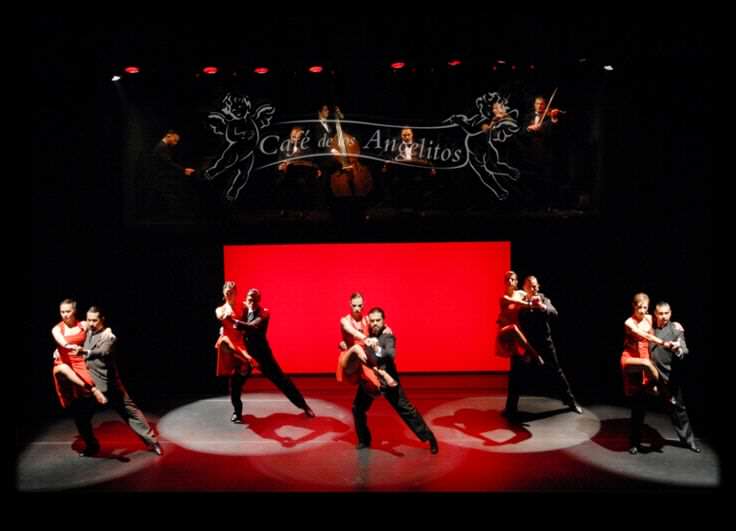
Antarctica
Our first destination after crossing the Drake Passage is the Palmer Archipelago. This is home to the Palmer Research Station, the smallest of the three United States bases in Antarctica. It is manned by a staff of no more than 45 during the summer months and many fewer over the winter.
Every year, the Prinsendam plays hosts to a group of about 15 who come out in their zodiacs for a few hours to tell us about what they do and to take advantage of some of the fresh fruits and vegetables that they usually don’t have. We in turn send them back with big bags of fruit to keep them going until their next supply ship comes.
We’ve had a series of excellent lectures, covering the history of Antarctic exploration and politics; the birds, everything you need to know about penguins, and a discussion of the animals who dive.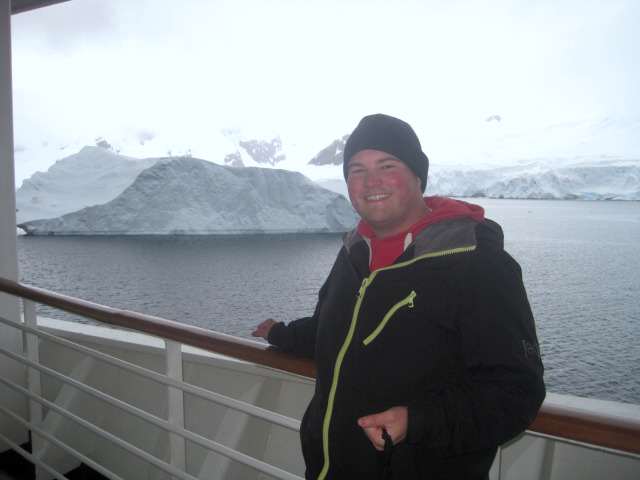
And the scenery – we passed through several bays that were just magical. Ice covered peaks, glaciers all around, icebergs in the water, bergy bits and growlers floating by, and the humpback whales and penguins everywhere you looked. A few of our fellow passengers who had not experienced this before were literally overwhelmed. It was a glorious day.
Click here to find out more about future Grand South America and Antarctica Cruises >>
Photo sources from fellow travelers:
San Blas street
Canal photos
Ecuador hats
Coffee bean
